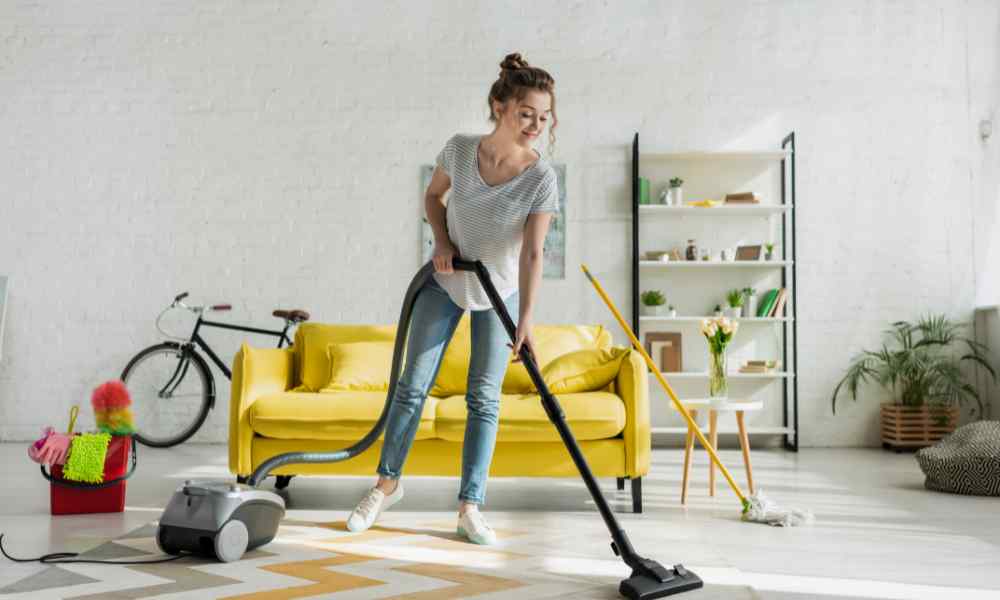Vacuum cleaners can be noisy machines, despite their cleaning proficiency. Vacuum cleaner typically range from 70 to 85 decibels (dB). While that might not seem excessive, decibels are measured on a logarithmic scale. This means a 10 dB increase translates to double the perceived loudness. Let’s explore factors affecting noise level and how to find a quieter vacuum for a more peaceful clean.
Unveiling the Mystery of Vacuum Cleaner Decibels
Your vacuum cleaner might be louder than you think! These everyday appliances can reach noise levels comparable to a hair dryer (around 80 dB). Decibels (dB) measure sound intensity, with higher numbers indicating greater loudness. Exposure to anything above 85 dB for extended periods can damage hearing according to health organizations. This article explores the decibel range of vacuum cleaners and how to find a quieter option.
Whisper Clean: Decibels in Vacuums

Vacuum cleaners can be as loud as a jackhammer, disrupting conversations and creating an unpleasant cleaning experience. Decibels (dB) measure sound pressure logarithmically. A small dB increase signifies a significant jump in perceived loudness. Normal conversation is around 60 dB, while traffic noise can reach 80 dB. Vacuums typically range from 70 to 85 dB, placing them firmly in the “loud” category. Thankfully, quieter models exist, reaching as low as 64 dB. These “whisper clean” machines allow for vacuuming without feeling like you’re under sonic attack. We’ll discuss how to choose a vacuum that balances cleaning power with noise level.
Loud Like a Rock Concert or Soft Like a Whisper?
Ever been startled by your vacuum’s roar while cleaning? Decibels (dB) measure sound level. Vacuum cleaners typically range from 70 dB (soft conversation) to 85 dB (busy street traffic). Design features like quieter motors and better insulation contribute to lower noise levels. Consider these factors when choosing your “sonic superhero” for a peaceful cleaning routine.
Vacuuming Without the Noise Pollution

Noise pollution in homes is a growing concern, impacting well-being. Decibels (dB) measure sound, and the scale is logarithmic, meaning a small increase in dB can be a big jump in loudness. Different vacuum types (upright, canister, robot) have varying noise levels, and loud models can exceed 85 dB, potentially harming hearing health. Thankfully, low-decibel vacuums exist, benefiting noise-sensitive individuals and pet owners. Finding the right balance between cleaning power and quiet operation is key.
Decoding Vacuum Cleaner Decibels
Think your vacuum is loud? Take our quiz! Decibels (dB) measure sound and relate to human hearing. Upright vacuums tend to be the loudest, while canister and robot models can be quieter. Several factors affect noise output, including suction power and floor type. Features like noise-canceling technology can significantly reduce decibel levels. Choosing the perfect match involves finding a vacuum that meets your noise preferences and cleaning needs.
Unveiling the Secrets of Vacuum Cleaner Noise
The demand for quieter vacuums is rising. These machines traditionally range from 70 to 85 dB, but advances in technology are producing models as quiet as 60 dB. Understanding decibels (dB) is crucial. This unit measures sound intensity on a logarithmic scale. So, a seemingly small dB increase can represent a significant difference in perceived loudness. Let’s delve deeper into the factors affecting noise level and explore how to find a quieter cleaning companion.
Finding Your Peace with a Quiet Vacuum
Living in a noisy world, a peaceful home environment is increasingly valuable. Vacuum cleaners, however, can disrupt that tranquility. These machines typically range from 70 to 85 decibels (dB), with some exceeding safe exposure limits for extended periods. Decibels are a logarithmic unit, meaning a 10 dB increase doubles the perceived loudness.
Fortunately, quieter options exist. “Whisper clean” models can operate as low as 64 dB, comparable to normal conversation. Consider your needs. Upright vacuums tend to be louder, while canister and robot models can be quieter. Look for features like noise-canceling technology and variable suction power settings. Remember, a quieter vacuum doesn’t have to compromise cleaning performance. By prioritizing noise level during selection, you can create a more peaceful cleaning experience and protect your hearing health.
